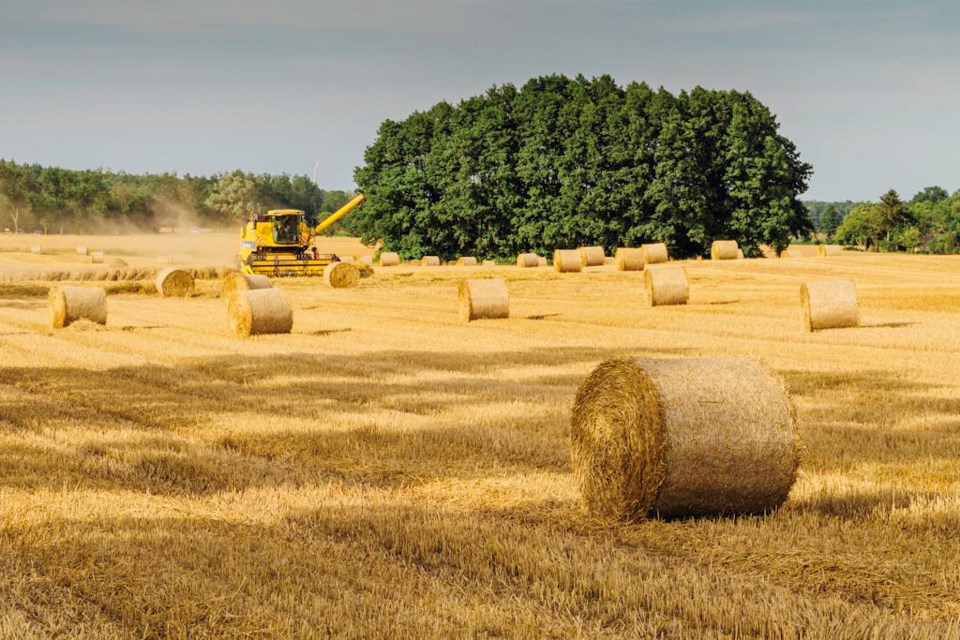A few tweaks to Agri-Stability were among the highlights of a meeting of Federal, Provincial, and Territorial Agriculture Ministers last week.
A news release from Agriculture and Agri-Food Canada re-iterated an announcement from earlier this year that for the 2025 program year only, the compensation rate goes up from 80% to 90% and the maximum payment limit increases from $3 million to $6 million.
Saskatchewan Crop Insurance Corporation will be implementing those changes immediately, according to a news release from the Saskatchewan Ministry of Agriculture.
For the 2026 program year, Agri-Stability is adjusting the feed inventory pricing for livestock producers, so it "appropriately captures the feed inventory valuation method for inventories destined to be used on farm and not sold" the provincial Ag Ministry said.
The Ag Ministers are also looking to include feed costs associated with rented pasture as an allowable expense in advance of the 2026 program year, then report back on the progress made at next September's annual meeting.
In addition to re-iterating their commitment to improving business risk management programs to meet current challenges farmers face, the group also discussed ways to increase inter-provincial trade of food.
Ideas include enhanced support from the Canadian Food Inspection Agency (CFIA) for small to medium-sized businesses wanting to market food products nation-wide under a federal food licence, increasing slaughter capacity where possible in regions with restricted access to services, and allowing inter-provincial trade of low-risk manufactured foods without a federal licence.
The Ministers also discussed ways to strengthen existing trade agreements as well as diversify to other markets. They also talked about China and the goal of removing remove Chinese tariffs on Canadian agriculture and seafood products.
Federal Agriculture Minister Heath MacDonald said "now is the time for unity" and the changes will give farmers more protection against trade uncertainty and dry conditions.
Saskatchewan Agriculture Minister Daryl Harrison said the changes to Agri-Stability "increases the effectiveness of the program" and "help protect against large declines in producers' margins."
The next meeting of Canada's Ag Ministers is September 7-9 in Winnipeg.
Positive reaction from farm groups
Some provincial farm groups are applauding changes made to Agri-Stability.
"The Saskatchewan Association of Rural Municipalities (SARM) has been strongly advocating on behalf of agricultural producers and ranchers, and we are pleased to hear there will be changes made to the AgriStability Program for 2025," SARM President Bill Huber said. "Offering producers further coverage, including permanent adjustments to feed inventory pricing for 2026, are all welcome additions to the program. Saskatchewan producers are currently facing rising costs, harsh weather conditions causing drought and feed uncertainty. These changes are a good first step in providing support for farming operations at a time when they need it most."
"The Saskatchewan Cattle Association (SCA) has long advocated for changes to the eligible feed expenses and changes to the feed inventory pricing for AgriStability," SCA Chair Chad Ross said. "We applaud the changes announced today, including moving forward with the permanent change to the feed inventory pricing for the 2026 program year. This should make the program more responsive for livestock producers. We will continue to advocate for the allowable feed expenses to become permanent as well."
"The Saskatchewan Stock Growers Association (SSGA) would like to thank Minister Harrison for his consultations and continued work for the livestock sector," SSGA President Jeff Yorga said. Including feed inventory cost and rental costs is a positive first step towards making AgriStability relevant to producers. As we deal with the effects of a decade long drought, BRM improvements are key to industry sustainability. We look forward to working for producers and advocating for further change."
"Farmers, particularly livestock producers, will be pleased with these improvements in risk management," Agricultural Producers Association of Saskatchewan (APAS) President Bill Prybylski said. "The permanent changes in feed accounting and cost adjustments mean the unique hurdles they face are finally being acknowledged. APAS is thrilled to witness these positive developments and advises all farmers to consider what AgriStability has to offer for protecting their businesses."
Speaking on Friday's SaskAgToday.com Roundtable about the changes, Chief Agricultural Editor of SaskAgToday.com Kevin Hursh said the increase to the compensation rate could make a huge difference with producers enrolled in the program.
The deadline to enroll in Agri-Stability is July 31.




